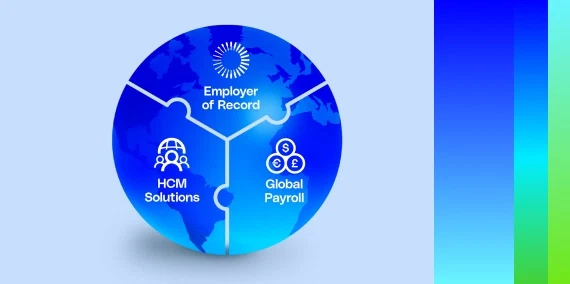The face of global mobility has changed forever. Companies working on integrating relocation or flexible living plans into their growth strategy will require full-stack solutions, especially considering the demand that can be expected, thanks to remote work’s acceptance in knowledge-based industries.
It can be frustrating trying to catch up with rapidly changing trends, such as increasing pressure to provide compliant global mobility policies. There’s no doubt it’s needed: 68 percent of respondents to an Envoy Global survey expected outbound immigration assignments to increase. In mid-2021, 24 percent of those respondents predicted that demand would surpass pre-pandemic levels in the near future.
The only way to cope with increasing need and interest in global mobility is to build seamless integrations that are compliant and allow for global, remote workforce hiring and management.
The problem: implementing an integrated global mobility and remote work policy
Today, parallel to the traditional mobility policies of either permanent transfers or varying-term assignments, global mobility managers are developing alternative policies. Those responsible for drafting mobility policies are now faced with commuter or rotational assignments, as well as cheaper expat-lite or local-plus policies designed to better suit employees’ specific situations. Moreover, virtual assignments are gaining traction amid remote work as an added option for companies looking for the best global mobility model for their business. Global mobility managers and leaders alike must navigate these new iterations on relocation, while complying with applicable laws and regulations.
Case in point: A recent BCG survey across 190 countries found that 50 percent of 209,000 respondents were open to physical relocation, but even more – 57 percent – were willing to work remotely for an employer that does not have a physical presence in their home country. This might even be preferable to many workers looking for new opportunities without physical relocation.
The prevalence of remote work has deeply connected family, wellbeing, and health to the workplace, after decades of clear separation. Employees want the control and flexibility to create their own experience, supported by a system that encompasses nontraditional benefits for virtual assignment employees, such as flexible work arrangements, home office expenses, and mental health and wellness programs.
As a result, HR tech has had to expand beyond payroll, recruitment, and benefits to encompass employees’ home life and interests in either relocating, or securing new employment from their home.
“The way we are working is changing so fast with people going home, coming in part-time, working on different projects, working on cross-functional teams — we need HR tech to be as morphable as the organization.” – Josh Bersin, Global HR Analyst, Founder and Dean of the Josh Bersin Academy.
Luckily for global mobility managers, HR tech is stepping up to the plate. Set to become a centerpiece for an effective, integrated global mobility policy, the SaaS and human resource information systems (HRIS) integration is likely to become the norm going forward. Companies that want to keep up with the rising trend toward global mobility are leaning on technology that provides shortcuts.
The solution: symbiotic technology and partnerships
On the tech side of things, companies looking to leverage an end-to-end platform for their global mobility policy needs can either develop it in-house, acquire legacy software, or partner with a company offering a global payroll and employee mobility solution. Here’s what global mobility facilitators need to know about each option:
- In-house solution
Developing an in-house solution has the potential to unlock an unmatched competitive edge. An in-house solution is not only tailored to a company’s specific needs and pain points, but also offers its customers a unique solution that cannot be found anywhere else.However, without a well-thought-out plan and the skilled, tech-tenured talent required to oversee the platform, companies that go tech-intensive might waste funds keeping up with the constant demand for innovation. It takes time to flatten the steep learning curve inherent to integrating a new, tech-infused mobility solution across all departments, and for managers and teams to adapt to the new tools.In-house global mobility technology development suits large organizations with a budget to throw at research and development (R&D). Leaders choosing to follow this method should seek expertise in global compliance ahead of project launch.
- Legacy software
Relying on legacy software for each step in the relocation or remote work process is the most popular safe practice. All teams can often use cost-effective, longstanding software platforms for efficiency for specific tasks and guaranteed business operation continuity.The inherent limitation of using software that solves individual issues relating to global mobility is that companies end up implementing suites of software to cover the full breadth of their needs. This limits the probability of seamless interactions between tools, and poses standardization issues when it comes to company data. Lacking single-language data can further consolidate existing challenges in accommodating a remote, relocating, or constantly mobile workforce — the company will experience efficiency challenges when making data-driven decisions if juggling multiple software solutions.Legacy software that is not designed to integrate with other tools can also open companies up to data leaks, noncompliance with global laws, and fines for neglecting local regulations. Companies choosing this route should dedicate resources to vetting data sharing processes when linking multiple HR tech tools.
- Experts in tech
A tech-infused solution backed by a global company can provide scaleup capacity, particularly across borders. The greater level of automation, which an expert platform can provide, limits silos caused by time differences, changing local laws, or fluctuating currency exchange rates.A solution that facilitates a team’s global mobility aspiration should free up time and resources from the often-overloaded HR department. It should also take compliance with local labor laws off HR’s hands, and facilitate a long-term data exchange for employees not located in a company’s home country.A global mobility plan with a strong remote work component requires a reliable, compliant, global employment platform supported by local HR and legal experts on the ground. Leaders should ensure they ask the right questions of their chosen employment platform before launching relocation and remote work plans for their global workforce – specifically drilling into compliance with each country’s local laws and data protection.
The result: Make the world your talent pool
Leaders looking to stay one step ahead of business trends and buoyant markets can choose an end-to-end solution that facilitates global mobility and relocation wherever your employees can legally work. Simultaneously, global mobility teams might also recognize that the need to relocate is a thing of the past.
Moving employees back to their home country to be closer to family is often a smart gesture to retain world-class employees. Now, companies can also hire local talent, wherever they planned to send an employee, and train them either virtually or via short-stay trips.
Now that relocating an executive to start operations elsewhere is no longer the sole solution, leaders who can react and flex to trends are seeing that the global talent pool has never been larger. It’s easier now than ever to source talent anywhere in the world. To make the most of these opportunities, companies can rely on global employment experts to make the world their hiring platform, while simplifying international HR tasks. Globalization Partners’ global employment platform enables companies to hire the best talent in the world and beat the competition to scale and to market across 187 countries.
Borders and location are a thing of the past. Companies with an appetite for growth and looking to capitalize on global markets can now rely on nimble and modern global mobility technology. This means that leaders can then focus exclusively on scaling their business.
Gone are the days of dedicating time and inestimable resources to lengthy, complex, and costly entity setups to facilitate relocation or international hiring. Global mobility has never looked this good.







